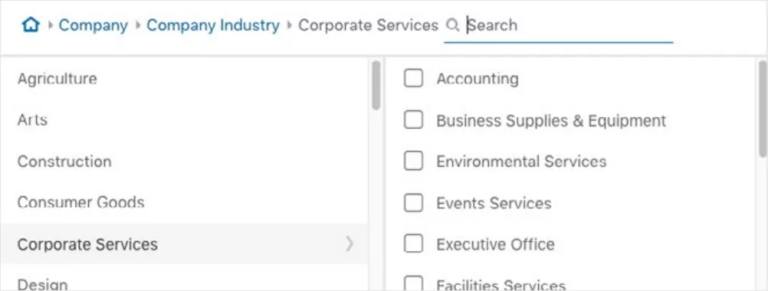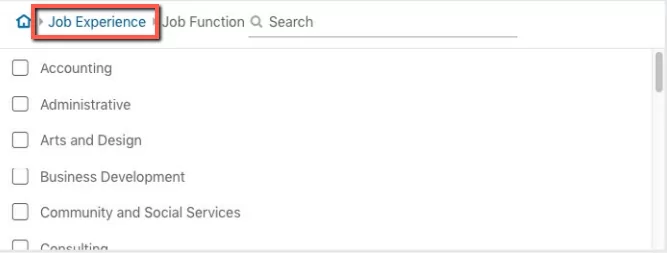What are LinkedIn’s ad targeting options, and how do they function?
To help your campaign approach achieve better outcomes, we’ve compiled a list of these possibilities and provided some advice on how to apply them. Learn how to target your LinkedIn audience using several targeting parameters to help you focus on niche demographics that are better suited for your company.
Businesses that prioritize B2B outreach or that want to connect with significant decision-makers inside another organization may find LinkedIn to be a crucial medium. But why is LinkedIn so substantial?
You can focus your budget on potential clients who are more likely to convert or audiences who typically respond well to your advertising by utilizing LinkedIn’s list of audience targeting choices to optimize your LinkedIn marketing approach. And LinkedIn has developed into a significant social media platform for business contacts with close to 700 million active members. With 3X greater conversion rates than other ad networks, including Google Ads, it is the second most popular platform for B2B marketing.
All of this indicates that LinkedIn ads may indeed be beneficial. Here’s how to use its targeting options.
Table of Contents
ToggleHow to target your LinkedIn audience
Targeting is set up at the campaign level on your Campaign Manager interface.
These numerous ad targeting possibilities can be confusing if you are new to digital advertising in general. Always sit down and consider your target audience as our first piece of advice. Once all the specifics are sorted out, you can begin considering your targeting alternatives to reach your target market.
You might start with one of LinkedIn’s audience templates if you’re still having difficulties deciding on which combination of targeting factors is most effective. Without having to go through and make educated guesses about the ideal combination of targeting options, audience templates can help you target your targeted audience based on job titles, recent graduates, and more.
You can test many campaigns concurrently to determine which is more effective if you are unsure of which combination of LinkedIn ad targeting settings is ideal. You can identify which combinations are more effective at reaching your goal by comparing two campaigns that are similar to one another. To find the most effective strategy to reach your audience, start by merely adjusting a few elements at a time and then continue to improve from there.
It’s always a good idea to try a few campaigns at once while adjusting variables like names or interests. Running many ads at once can also help you increase your reach.
Last but not least, while using LinkedIn’s advertising targeting choices, you should always take care to avoid hyper-targeting. A limited scale will harm the performance of your campaign and restrict your reach, just like with any digital marketing effort. As you build your audience, Campaign Manager will provide your estimated reach and a suggested range. It will also let you know if your audience is getting too small.
Finally, there are only 100 alternatives available for targeting depending on demographics.
As a rule of thumb, LinkedIn advises starting with a target audience of over 50,000 for Text Ads and Sponsored Content and over 15,000 for Message Ads. It’s important to remember that this level of targeting applies to all of LinkedIn’s ad kinds.
As a result, you have options for LinkedIn advertising targeting for:
- Ads with sponsored content, or advertisements created with sponsored content, are displayed on user feeds. Other ad subtypes including image advertisements, video ads, and carousel ads are also included in this group.
- Advertisements that can be sent to specific people using LinkedIn’s messenger are known as InMail advertisements.
- The sidebar contains text advertising, which are ads based on pay-per-click models and seems like conventional text-based ads.
You will be asked to choose an objective for your advertising campaign when you log in to your Campaign Manager.
The next step is to specify your target audience based on the choices below and your goals. Even ad types will be suggested by the LinkedIn Campaign Manager based on your objective.
What choices are there for audience targeting on LinkedIn?
If you have experience in digital marketing, you are undoubtedly already aware of the many social networks targeting choices. With LinkedIn, you can target people based on their professional activities as opposed to the interests or demographics that are used by most social media networks.

1. Location:
The first and only required setting for LinkedIn ad targeting is location. Starting broad and targeting people by state or country is preferable to starting narrow and focusing on a city or metropolitan area. You can reach customers using this targeting option depending on their IP address or the location that they have provided in their profile. You also have the choice to exclude locations that can be helpful for drawing in clients who aren’t familiar with your business.
2. Company:
The company is the first of the optional targeting facets, and it offers a variety of possibilities for targeting. You can target people based on your connections to companies, industry, size, name, followers, and more. Since many of these targeting options very much speak for themselves, we won’t go into great detail about their applications.
You can contact any employees at the companies you choose who have first-degree relationships through company connections. Attention: Only businesses with more than 500 employees can use this option.
You can target a user’s principal industry of employment by using their company industry.
Company size enables you to communicate with users according to the size of the organization they work for. The amount of employees mentioned on the company’s LinkedIn page affects this targeting option.
You can target users based on who they indicate as their employer by using the company name. This option is likewise based on LinkedIn Pages that are updated by staff members of the company, similar to the company size.
You can target the followers of your own page byosing the corporate followers option. You must first link your advertising account with your own LinkedIn Page to use this LinkedIn ad targeting option. The campaigns you run will automatically reach both followers and non-followers if you don’t activate this feature.

3. Demographics:
Member age and member gender are two distinct targeting features included in the demographic LinkedIn ad targeting options. User gender is determined based on what they enter in their profile information, whereas member age is merely an assumption based on that information.

4. Education:
You can choose from a variety of targeting options for study areas, member schools, and degrees using the education options. Fields of study are centered on the main subject covered by a member’s degree, and people are reached according to the options they made for their degrees.
5. Job Experience:
When it comes to targeting based on a user’s job experience, there is a variety of various LinkedIn ad targeting choices accessible. You can first choose to focus on members based on the job function that corresponds to the member’s chosen job title.
Using job seniority and job titles, you can target users based on their influence and status in their present positions, respectively, and their current titles, respectively. The titles are then bundled and standardized by LinkedIn algorithms every time a person updates their profile roles.
You can find users who have indicated their competence in that field by listing relevant terms in the skills section using the member skills. These include talents entered by the person, skills specified in their profile text, and skills that can be inferred from what they have already listed.
The years of experience targeting facets come last. With this choice, you can pick them out based on how many years of experience they have. You wouldn’t need to be concerned about those influencing your adverts because LinkedIn also ignores experience gaps and doesn’t double count experience that is similar to other experiences.

6. Interests and Traits:
Finally, the traits and interests You can contact members using LinkedIn’s ad targeting choices based on member interests, individual member interests, and member attributes. Again, these depend on the members’ unique profile information as well as their online behavior and interactions.
What does this all ultimately mean?
As you can see, LinkedIn ads can target individuals in a variety of ways. You have the option to be creative with your ads depending on the audience you’re aiming to attract thanks to the variety of ad styles accessible.
With LinkedIn’s various audience targeting choices, you have many opportunities to connect with different individuals, but like with other paid advertisements, you must be flexible and strategic and invest the time to figure out what works best for your company.
Like any other social media site, a successful marketing strategy for LinkedIn calls for devoted campaign management and optimization. Having the expertise and knowledge to build up campaigns, modify targeting options, manage your budget, and track outcomes can be necessary for professionally optimizing your advertising with LinkedIn’s ad targeting tools. You can be underperforming and overspending in your market if you can’t manage your ads properly.
For more details on digital paid media marketing for social sites like LinkedIn, contact us. You can understand and set up targeted advertising with the aid of our qualified experts.

